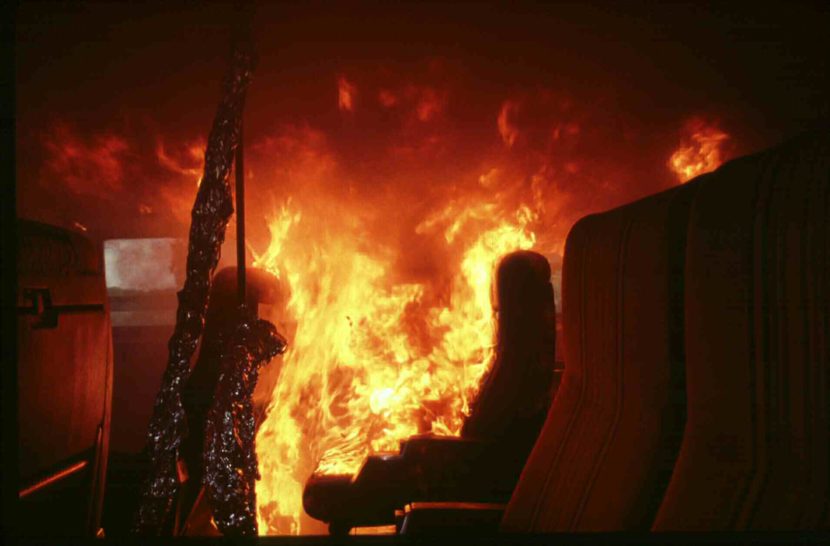What are the representative design fire scenarios in transit and passenger rail systems? NFPA 130, 2017 edition, has presented seven common fire scenarios:
- A fire originates outside the vehicle interior, such as below the floor or rooftop. The fire causes the train to stop in a tunnel or station, and could burn through the floor or rooftop into the vehicle’s interior.
- A fire originates in a vehicle’s interior. Some recent train fire studies suggest that a NFPA 130-compliant car will not flashover, unless the event is initiated with two or more liters of a flammable liquid or accelerant. The designer should verify this possibility, as ventilation requirements can vary greatly depending on flashover expectations.
- Car-to-Car Fire Spread. The fire may spread from car to car. Parameters that affect this are the fire resistances of the car ends, whether the interior car doors are left open or closed, whether the cars have “bellows” connecting them or not, the tunnel ventilation moving the heat from the fire site downstream to the next car, whether the car exterior windows are glass or polycarbonate, whether the station has sprinklers or not.
- A fire consumes trash, luggage, wayside electrical equipment, etc. in the stations or tunnels.
- A fire occurs in a non-transit occupancy that is not protected by sprinklers, such as a kiosk or small shop.
- A fire in a dual-powered vehicle (diesel and electric traction) results from the puncture of a fuel tank or rupture of a fuel line.
- A fire originates in a maintenance vehicle or work-train. If maintenance vehicles are never in the stations or tunnels during periods of revenue operations, then maintenance vehicle or work train fire scenarios do not have to be considered as design fire scenarios.
(Featured image from http://www.nist.gov/el/fire_research/firesafety/trains.cfm)

